Designing Responsibly: Reinvigorating a BVH Legacy
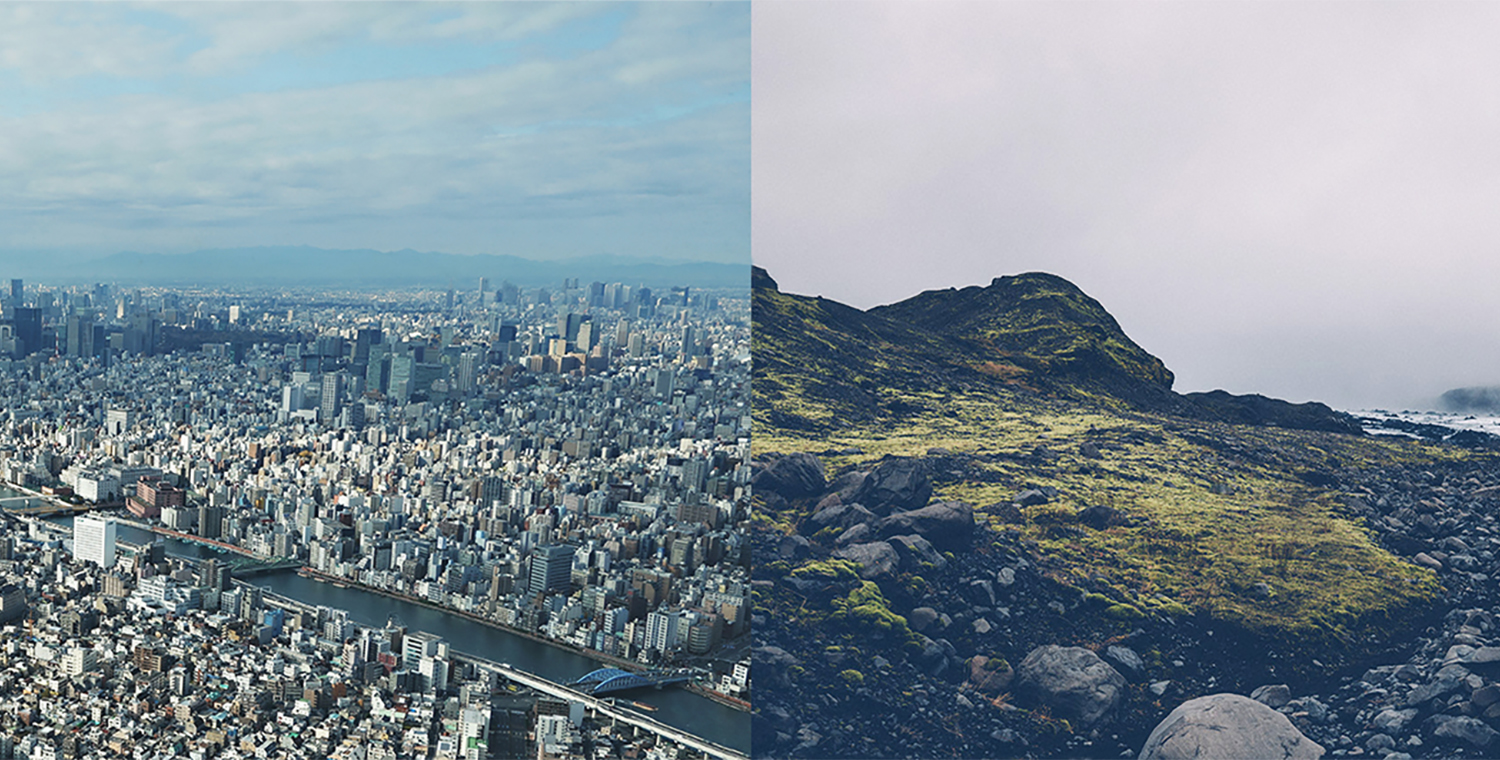
The screening was hosted by the UNL College of Architecture student U.S. Building Green Council group. To be frank, the film, while beautifully shot by National Geographic, was quite sobering, shocking, and upsetting. However, I did find a positive message to take away: Humans are resilient, the planet is resilient and if we work hard, together we can impact the trajectory of our future in a positive way. While things don’t always go the way one hopes, I refuse to give up.
Deon Bahr, one of BVH’s founding partners, was also at the viewing of the film. He told me about his house that he designed back in the seventies which spoke to these same issues we face today. For BVH, environmental responsibility has been part of our dialogue since its founding. It’s a legacy within our firm that we are re-invigorating in the work we do today. We see environmental responsibility as a baseline for design. We believe this is the right thing to do, and that it brings a service which adds value for our clients in terms of energy savings and the longevity of their facilities.
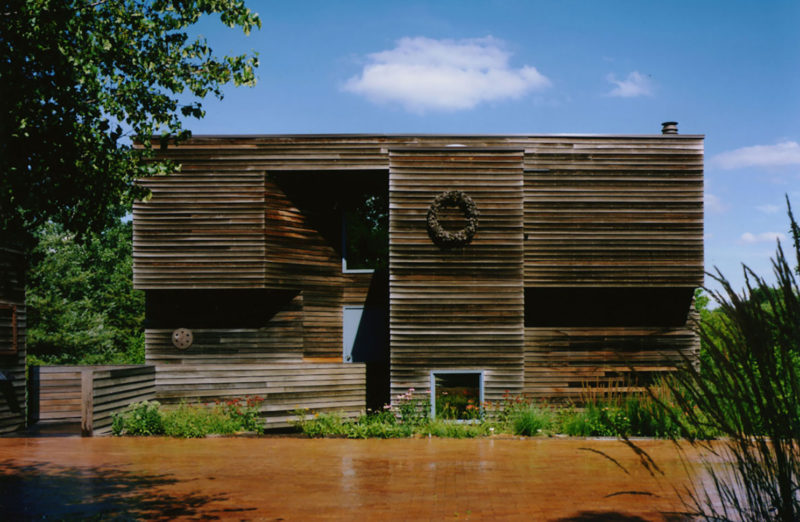
Bahrhausen, 1971 / Deon Bahr, AIA
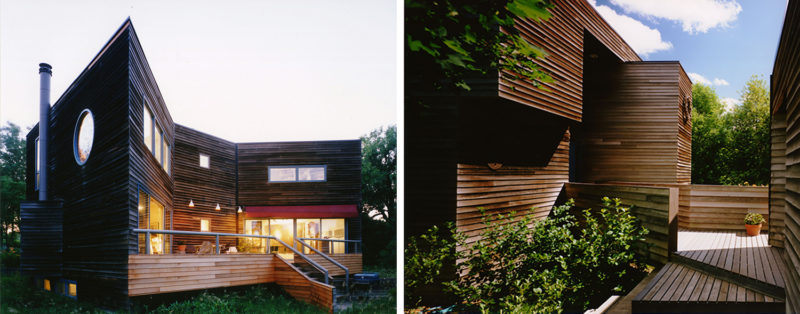
With this in mind, BVH has adopted the AIA 2030 Commitment. This means a commitment to work towards achieving carbon neutrality on all projects by 2030. It’s a growing national initiative that provides a consistent framework with simple metrics and a standardized reporting format to help firms evaluate the impact design decisions have on a project’s energy performance. The AIA 2030 Commitment was founded by Edward Mazria, FAIA, out of his think tank, Architecture 2030, back in 2006. According to the U.S. Energy Information Administration, buildings produce almost 47% of our country’s carbon emissions. This means architects can have a significant impact on changing this pattern.
We at BVH remain optimistic. We’re committed to designing to positively shape, enrich and preserve the planet for our current population and generations to come. We’re learning to track the energy use of the projects we design and compare them to a national baseline. This helps us understand how our projects stack up against local and national comparisons. By tracking this information, we can continue to learn how we can achieve high-performance buildings.
While we cannot undo the damage done, we’re hopeful that together we can make movement towards positive change.
Northeast Community College: Sustainable, Holistic Building Design
A recent example of this idea is the new dining space at Northeast Community College in Norfolk, NE. The project seeks to design a student center that fosters connection among students, including both campus residents and commuters. Situated on the western edge of campus, the building acts as a terminus to the pedestrian mall. This provides a visual connection to the rest of campus, as well as allowing room for growth. The student center is located between two new residence halls, each designed for 200+ students in suite-style apartments. The first phase includes the residence hall to the west, Path Hall, and the student center. The hall to the east will follow in a future phase.
The site naturally slopes from the northeast to the southwest. We saw this as an opportunity to create an interior terraced concourse space which acts as the main connection between the two residence halls. This space additionally serves as student lounges, a computer lab, and pre-function space for the conference rooms.
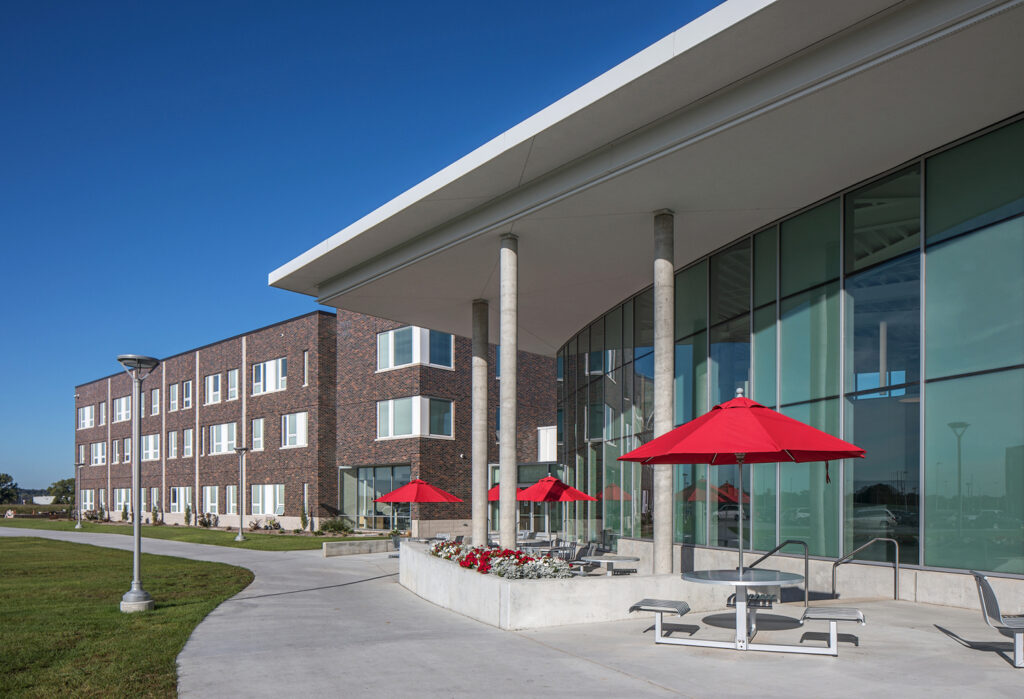
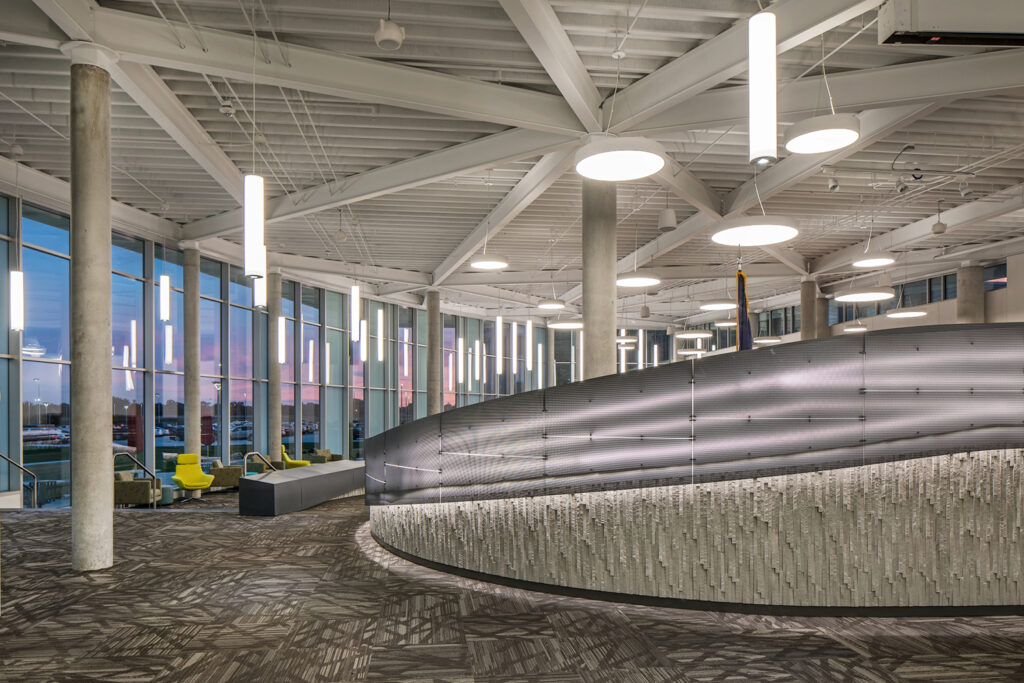
The concourse space is separated from the main dining area by a partial height wall. This wall, referred to as the “nest wall” by the client and design team, functions as a multi-purpose design element: It divides space, acts as the main distribution for the underfloor displacement ventilation, provides seating and countertops, and also acts as the backdrop for the stage.
Because Nebraska is heating dominated, we designed the building to take advantage of passive solar in the winter and provided a large overhang for summer shading. The size, shape, and position of this overhang shield the glass wall from the harsh summer sun while still allowing the warm winter sun to penetrate into the space. To ensure the admittance of direct sunlight doesn’t result in excessive amounts of glare, we strategically located PVB (polyvinyl butyral) layered into the patterning of the facade. This special layer on the inside of the glass diffuses natural light, significantly reducing glare.
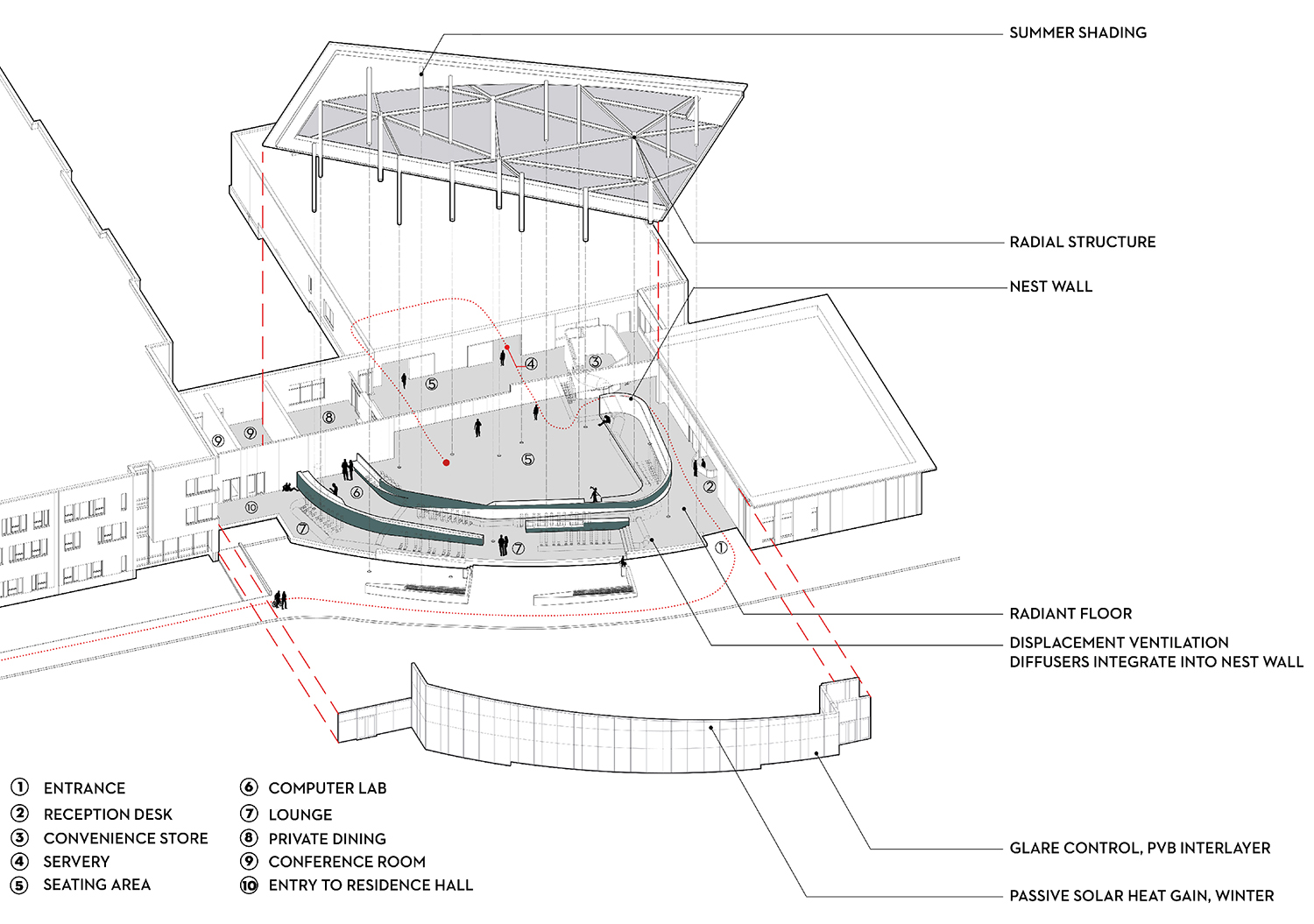
The roof structure was organized around the nest wall layout, working to provide a column-free view of the stage from the main dining area. In order to achieve this, we designed a radial structure. This system allowed us more freedom in the placement of columns and became an aesthetic feature of the space.
Each of these elements and strategies work together to create an integrated solution. They are interdependent to one another for greater gains. Ultimately, we’re looking to leverage this interdependence, to do more with less, creating multi-purpose solutions which produce thoughtful, human-centered, high-performance projects.
Going “Green”
In his Encyclical Letter Laudato si’ (LS), Pope Francis echoes both St. John Paul II and Pope Emeritus Benedict XVI in their call for an ecological culture to care for God’s creation and to build up and protect our “common home” (LS 1).
In keeping with Catholic teaching, the St. John Paul II Newman Center has been designed with a core principle of being a good steward of God’s resources and gifts. The design strives to respect and conserve our environment, through good fundamentals of design and construction.
These fundamentals include:
- Conservation of energy through extra insulation and technology
- Proper use of recycled and renewable materials
- Low-maintenance, long-lasting structure, materials, equipment
Some details include:
- A majority of the lighting is LED, reducing energy consumption and maintenance costs.
- Dimming is provided in the resident suites for enhanced occupant comfort and energy savings.
- Aluminum is used for large conductors, which is significantly lighter than copper, decreasing transportation fuel consumption to the job site.
- Occupancy sensors are used to foster energy savings when rooms are unoccupied.
- Many lights contain recycled metals and materials.
- Fluorescent lamps are specified with low-mercury contents, minimizing toxic materials introduced to the building.
- Energy efficient water source heat pump system.
- Low-flow plumbing fixtures to reduce water consumption.
- Building management control system which can help reduce energy use.
- Demand-controlled ventilation– meaning the building is only bringing in and conditioning the required amount of outdoor air.
- Siphonic roof drain system allowing smaller stormwater piping in portions of the material – utilizing fewer materials.
- Close access to and promotion of public transportation, as well as walking/bicycle trails.
We at BVH Architecture are proud to be a part of the team to create the JPII Newman Center. May our efforts at conserving natural resources and being stewards of God’s creation be an additional witness to the Person of Christ, who invites us to live in the fullness of life, both now and in eternity. As Pope Francis reminds us: “At the end, we will find ourselves face to face with the infinite beauty of God (cf. 1 Cor 13:12), and be able to read with admiration and happiness the mystery of the universe, which with us will share in unending plenitude. Even now we are journeying towards the Sabbath of eternity, the new Jerusalem, towards our common home in heaven. Jesus says: ‘I make all things new’ (Rev 21:5)” (LS 243).
This article was originally written for and published on jpiiomaha.org.





